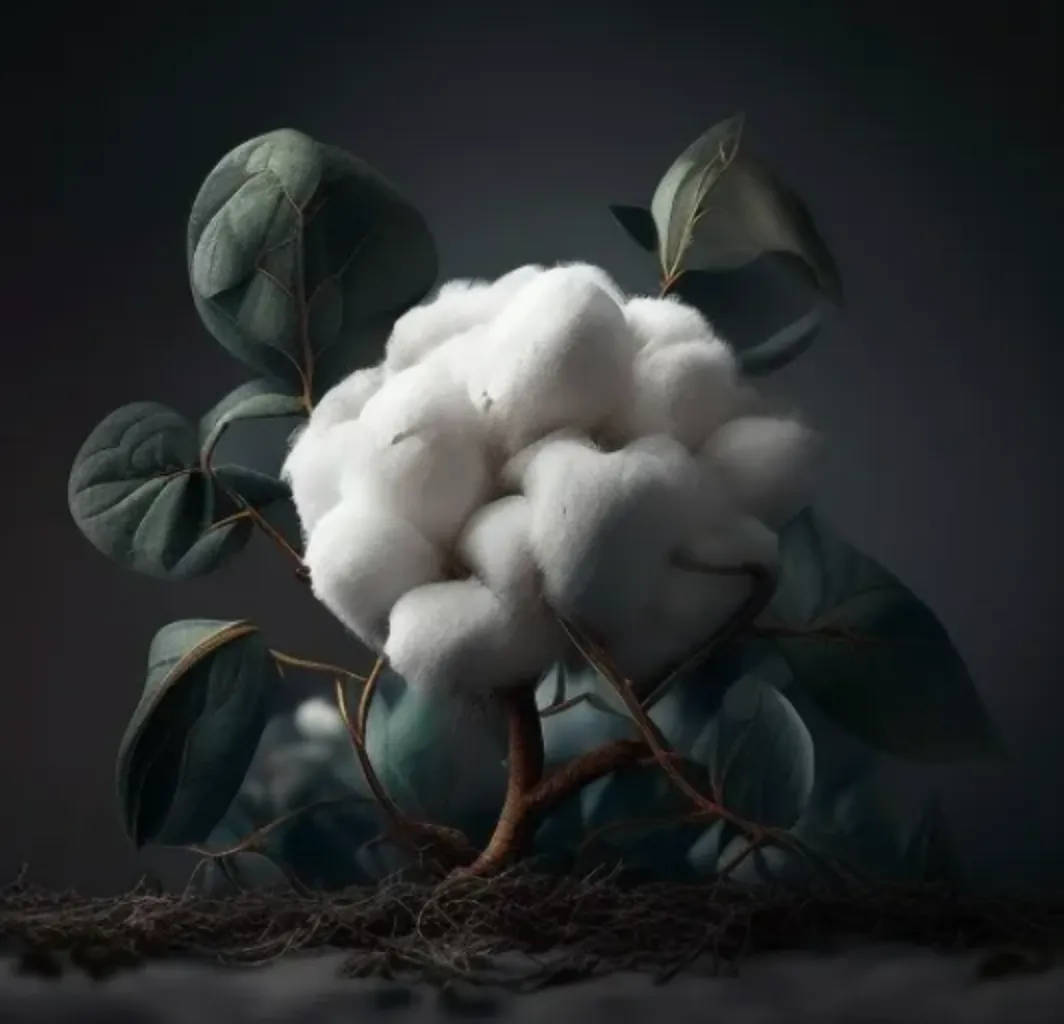

As the world becomes increasingly aware of the need for sustainability, the fashion industry is under pressure to find more sustainable materials. Cotton is one of the most popular materials used in fashion (25 million tons a year), but it has a significant environmental footprint. We’ll deeply dive into cotton’s sustainability and explore what needs to be done to make it more sustainable.
Cotton is a natural fiber derived from the cotton plant, which belongs to the mallow family of plants. It is one of the oldest known fibers and has been used to create fabrics for thousands of years. Unfortunately, most cotton is grown with pesticides and synthetic fertilizers, which can negatively impact air quality, soil fertility, and water resources.
The water footprint of cotton?
The water footprint of cotton is a significant factor in determining its sustainability. Cotton requires large amounts of water for cultivation, and 2,500–5,000 liters of fresh water are needed to produce just one kilogram of cotton fiber. This is because cotton plants have an extensive root system that needs more water than other crops, such as corn and wheat. For example, The overuse of water for cotton farming in the Aral Sea region has caused many serious issues, including reduced water supply and agricultural productivity, soil erosion, environmental degradation, and health risks. This has had a detrimental effect on the local environment and communities in the area. Additionally, large-scale cotton farming can negatively impact water resources as pesticides, and synthetic fertilizers are often used in production.
Pesticides and herbicides used on cotton crops
Pesticides and herbicides are often used on cotton crops to protect them from pests, insects, and weeds. While these chemicals can effectively keep plants safe from harm, they can also have a severe environmental impact. For example, certain types of pesticides and herbicides can lead to runoff into nearby bodies of water, carrying toxins that can harm wildlife and the environment. Additionally, some of these chemicals can be toxic to the soil and organisms that inhabit it. As such, organic farming is becoming more popular for cotton production as it eliminates the need for potentially hazardous chemicals.
Genetically modified cotton
Genetically modified cotton is a powerful agricultural tool with multiple benefits. It offers increased pest and disease resistance, improved yields of up to 25%, reduced environmental impact from fewer chemicals released into the environment, healthier food products due to its use in oil, meal, and flour substitutes for unhealthy fats and cholesterol as well as lowered production costs through less crop loss. However, genetically modified (GM) crops come with some potential risks, including the transfer of genetic material to other plant species within an area and the possibility of increased risk of developing allergies or health problems from eating GM products. Additionally, foreign genes introduced into organisms can lead to unexpected changes that are difficult to predict and monitor — a situation further complicated when pollen contamination leads to non-GM varieties in neighboring fields also becoming genetically altered. Unfortunately, there is still much unknown about any long-term effects caused by consuming GM food items or exposure to environmental contact. Moreover, the agribusiness industry’s adoption of GMO plants is set to dramatically change the landscape, creating a major divide in how food crops are produced. As legal discussions around antitrust laws continue and opposition mounts, this could be just the start of an immense power shift that may ultimately override existing agriculture regulations.
How can cotton become sustainable?
If cotton plants were to be made sustainable, it would revolutionize the field of textiles and apparel. We could finally move away from conventional cotton farming practices that rely so heavily on pesticides and water that they poison our environment. Instead, we could turn to organic farming techniques to maintain a correct balance of elements in the soil necessary for strong and healthy cotton plants. This would save scarce resources like water by allowing us to rotate crops instead of constantly straining one piece of land with excessive drainage. Furthermore, aligning closely with ecological ethics, this shift towards sustainability could give us access to more fair-trade methods and ethically sourced materials at scale — allowing businesses better control over their supply chains and helping them guarantee their customer’s ethical production.
Though it is often billed as “natural,” growing cotton has a significant environmental impact. From the enormous amount of water required to produce a single season’s worth of cotton to the large land footprints and heavy use of pesticides, there is much about conventional cotton that is anything but sustainable. But all hope is not lost! There are ways that we can make changes at every level of the production process to ensure that our clothing does not come at such a high cost to the environment.